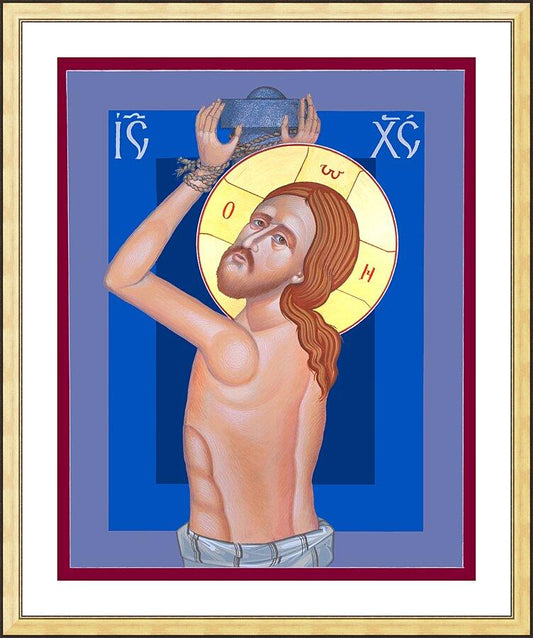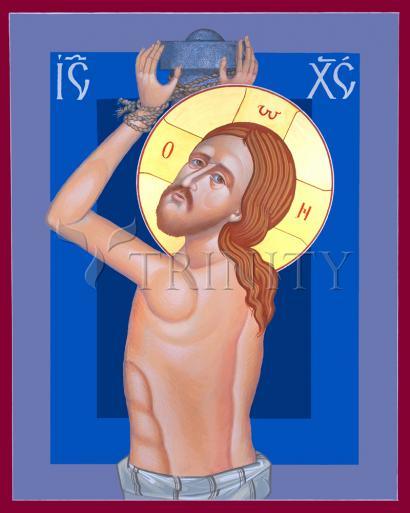Before crucifixion, the condemned would often endure flagellation. A whip with leather strands called a flagrum or flagellum in Latin "scourge in English" was fashioned with pieces of metal or bone and used to lash the back, shoulders and legs of the convict. At first, the skin and underlying fat were torn. Then the muscles and tendons were slashed, including the vessels that supply blood to the tissues.
After the scourging, the Scriptures say that Christ was taken by soldiers into the praetorium " the palace of Pontius Pilate, the Roman procurator of Judea. Jesus was surrounded by a cohort of soldiers (300 to 600 soldiers) and a crown woven of thorns was placed on his head.
While the Bible does not specify what kind of plant was used, any size thorn would cause blood loss as it forced its way through the scalp. Jesus was also forced to carry a reed and wear a scarlet robe " attire reserved for royalty. With an improvised crown, imperial robe and mock scepter, Jesus was ridiculed, spat upon and struck by soldiers who knelt before him saying, Hail, King of the Jews.
After a vicious scourging, Jesus was mocked while wearing a crown of thorns and a scarlet robe " a cruel parody of the regalia worn by the emperor. The actions by the Roman soldiers unwittingly carried great symbolism and fulfilled prophecy.
Thorns represent man's disobedience. In the Garden of Eden, Adam and Eve were told by God that they could eat from any tree except from the tree of knowledge of good and evil, but they were persuaded by the serpent to eat the forbidden fruit.
God then tells Adam that the ground is cursed, and despite his great labor in cultivating it: "thorns and thistles shall it bring forth to you." (Gen 3:18)
The color of the cloak placed on Jesus " scarlet " represents sin: "Though your sins be like scarlet, they may become white as snow"" (Isa 1:18)
By wearing the crown of thorns and the scarlet robe, Christ is taking on himself the icons of the fall of man and of humanity's sin. In addition to having symbolic meaning, Christian writers see the scourging as fulfilling prophecy.
Isaiah's prophecy is realized by Christ's stripes " the marks on his back left by the flagrum: ""with his stripes we are healed." (Isa 53:5)
By hitting Jesus, the soldiers fulfill Micah's Messianic vision: "With the rod they strike on the cheek the ruler of Israel." (Mic 4:14)




















